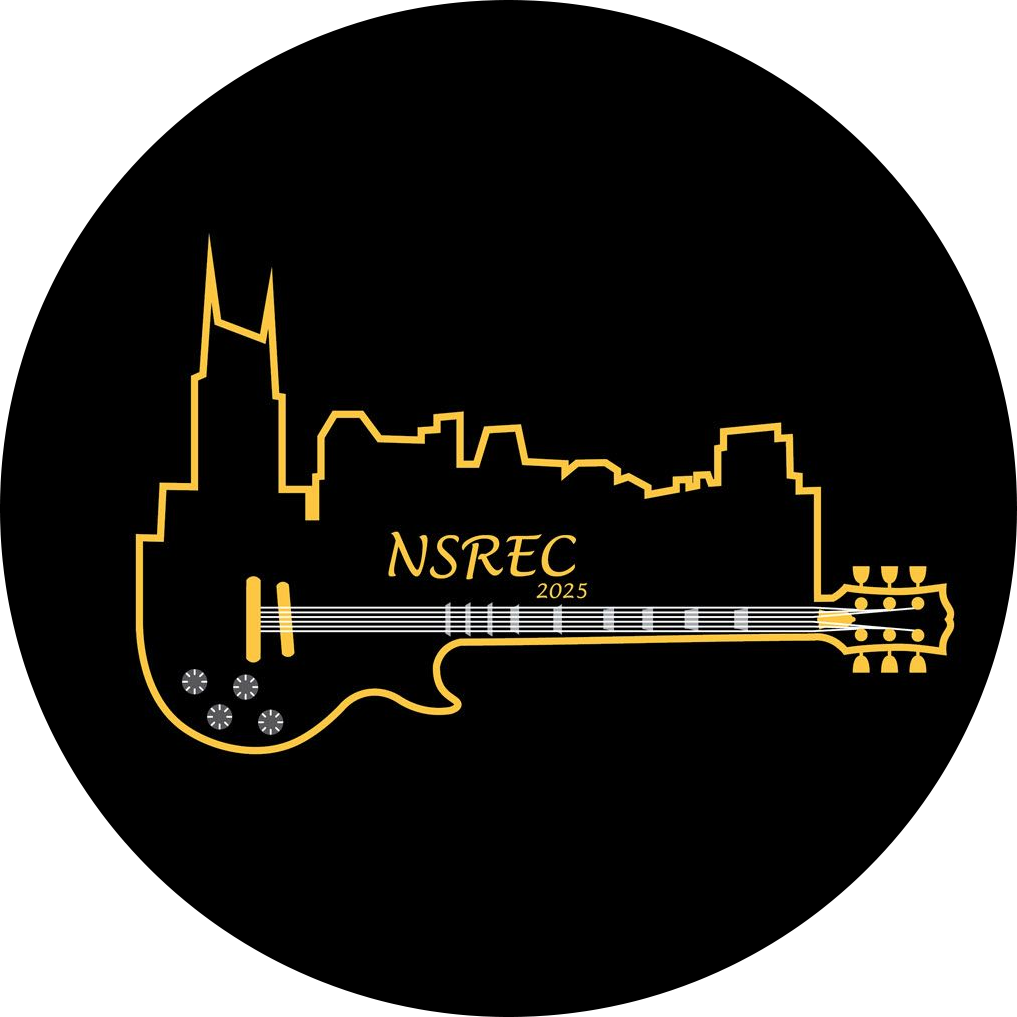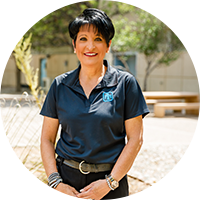2025 IEEE NSREC TECHNICAL PROGRAM SCHEDULE
NASHVILLE RENAISSANCE HOTEL, NASHVILLE, TN
TUESDAY, JULY 15, 2025
7:00 AM
Grand Ballroom 1
Breakfast
8:00 AM
Grand Ballroom 2-3
OPENING REMARKS
Dolores Black, Sandia National Laboratories, General Chair
8:05 AM
Grand Ballroom 2-3
AWARDS PRESENTATION
Kay Chesnut, Raytheon Technologies, Radiation Effects Steering Group, Executive Chair
9:00 AM
Grand Ballroom 2-3
TECHNICAL PROGRAM OPENING REMARKS
Prof. Andrew Sternberg, Vanderbilt University, Technical Program Chair
SESSION A
Grand Ballroom 2-3
SINGLE EVENT EFFECTS: DEVICES & ICs
9:05 AM
SESSION INTRODUCTION
Chair: Sapan Agarwal (Sandia National Laboratories)
A-1
9:10 AM
Key Variables in the Reliability of ML Models Exposed to Neutrons, Protons, and Heavy Ions
B. Coelho1, M. Saveriano1, M. Tali2, C. Frost3, M. Donetti4, M. Pullia4, E. Verroi5, F. Tommasino1, S. Bounasser6, C. Poivey2, P. Rech1
- University of Trento, Italy
- ESA, Netherlands
- ISIS Neutron and Muon Facility, United Kingdom
- CNAO, Italy
- TIFPA, Italy
- ESA, France
We test large machine learning models on TPUs at 5 different radiation facilities to identify particle, software, and hardware-dependent reliability behaviors and reduce the variable space to qualify the reliability of neural networks.
A-2
9:25 AM
Assessing System-Level SET Response in Analog PLLs from Component-Level Response
D. Sam1, J. Teng2, B. Ringel1, P. Francis1, J. Moody1, J. Shin1, Z. Brumbach1, A. Ildefonso3, A. Khachatrian4, T. Crane5, D. Mcmorrow4, J. Cressler1
- Georgia Institute of Technology, USA
- The Aerospace Corporation, USA
- Indiana University Bloomington, USA
- US Naval Research Laboratory, USA
- Jacobs, Inc. and US Naval Research Laboratory, USA
The SETs of standalone circuits of a fully analog SiGe PLL are used to understand system-level SET responses and determine the circuit whose SET response is the most impactful to the output of the PLL.
A-3
9:40 AM
One-Fin versus Two-Fin Single Event Upset Vulnerability at the 3-nm Bulk FinFET Technology
S. Tolson1, J. Kronenberg1, N. Pieper1, Y. Xiong1, D. Ball1, B. Bhuva1
- Vanderbilt University, USA
Single-event upset cross-sections are investigated as a function of the number of fins in a transistor at the 3-nm node. Results show that one-fin D-FF designs are less vulnerable than similar two-fin D-FF designs under identical conditions
9:55 AM – 10:25 AM
Broadway Ballroom
BREAK
SESSION B
Grand Ballroom 2-3
HARDNESS ASSURANCE: PIECE PARTS TO SYSTEMS AND TESTING APPROACHES
10:25 AM
SESSION INTRODUCTION
Chair: Rebekah Austin (NASA Goddard Space Flight Center)
B-1
10:30 AM
A Survey of Depth-Parameter Selection in Upset-Rate Calculations
D. Hansen1, B. Kimbrell1, T. Manich1, C. Pownell1, I. Zavatkay1
- L3 Harris, USA
This paper reviews guidelines for depth parameter selection in rate calculation and compares them to published on-orbit data. Current guidelines result in underestimates for some modern devices.
B-2
10:45 AM
Dynamic Time Warping for ASET Cluster Analysis
J. Carpenter1, D. Loveless1, A. Ildefonso1, J. Hales2, D. Mcmorrow2, T. Peyton1, S. Westfall1, J. Lazenby1
- Indiana University, USA
- NRL, USA
Dynamic time warping (DTW) is used to analyze ASETs, enabling discrimination based on radiation source, LET, and strike location. Heavy-ion and laser-QBB data show that DTW enables cross-source correlation while enhancing insight into circuit behavior.
B-3
11:00 AM
Scaling Factors for Single Event Upsets with High Error Counts
P. Oldiges1, N. Domme1, R. Zedric1
- Sandia National Laboratories, USA
We perform an analysis of multiple single events in individual bits of memory during SEU testing. Large numbers of multiple strikes can be accounted for, even with asymmetry in the logic state upset cross-section.
B-4
11:15 AM
PEARCE: Pulsed Electrons for Alternative Radiation Effects Characterization of Electronics
G. Tzintzarov1, J. Teng1, A. Kulkarni2, A. Bushmaker1, P. Musumeci2, M. Looper1, D. Daniel1, M. Voegtle1, R. Berry3, S. Milton4, G. Allen5
- The Aerospace Corporation, USA
- UCLA, USA
- RadiaBeam, USA
- Tau Systems, USA
- NASA JPL, USA
Development of SEE testing using pulsed electrons is discussed. The Thorlabs FDS010 photodiode is used as a vehicle to compare electron tests, heavy-ion tests, and simulation. Results support the future use of such beams.
B-5
11:30 AM
SEU cross-section predictions in 3nm FinFET using an advanced charge transport model
S. El hajji1, G. Gasiot1, T. Thery1, V. Correas1, N. Pieper2, Y. Xiong2, J. Kronenberg2, J. Autran3, B. Bhuva2, D. Pandini4, V. Malherbe1, P. Roche1
- STMicroelectronics, France
- Vanderbilt University, USA
- Univ Rennes, CNRS, IPR (Institut de Physique de Rennes) – UMR 6251, France
- STMicroelectronics, Italy
A fast 3D Poisson equation solver optimized for FinFET architectures has been integrated into the TIARA simulation platform. SEU predictions of a 3nm FinFET flip-flop exposed to heavy ions are made and compared with experiments.
B-6
11:45 AM
Implications of Ion Fragmentation for High-Energy Heavy Ion Single Event Effects Testing
R. Garcia Alia1, M. Sacristan Barbero2, D. Lucsanyi2, A. Waets1, K. Bilko1, M. Cecchetto1, M. Delrieux1, N. Emriskova3, D. Prelipcean1, I. Slipukhin1, D. Soderstrom1, F. Ravotti1, L. Esposito1, F. Cerutti1, S. Gilardoni1, M. Sivertz4, S. Kodaira5, F. Saigné6
- CERN, Switzerland
- Univ. Montpellier, CERN, Switzerland
- CERN, Univ. Montpellier, Switzerland
- NSRL-BNL, USA
- National Institutes for Quantum Science and Technology (QST), Japan
- Université de Montpellier, France
We extend the fragmented SEE benchmark to include additional ions (beyond lead) and effects (beyond SEU) and apply the same simulation framework to estimate the beam contaminant impact on ground-based high-energy SEE measurements
12:00 PM – 2:30 PM
LUNCH ON YOUR OWN
OR
WOMEN IN ENGINEERING LUNCHEON (Ticket Required)
SESSION C
Grand Ballroom 2-3
PHOTONIC DEVICES AND INTEGRATED CIRCUITS
2:30 PM
SESSION INTRODUCTION
Damien Lambert (CEA)
C-1
2:35 PM
Very Low to High Dose Rate Irradiation Response of a Single-Mode Optical Fiber at Telecom Wavelengths
M. Roche1, H. Boiron2, T. Maraine3, E. Marin4, A. Meyer5, D. Lambert6, P. Paillet6, J. Boch3, F. Saigné3, A. Morana4, Y. Ouerdane7, A. Boukenter4, S. Girard7
- Laboratoire Hubert Curien – CEA DAM, France
- Exail, France
- Université de Montpellier, France
- Laboratoire Hubert Curien, France
- Université Jean Monnet, France
- CEA, France
- Université de Saint Etienne, France
We investigate the growth kinetics of the radiation induced attenuation of 25-km long commercial Ge-doped optical fiber coils during a long-term gamma irradiation at different very low dose rates.
C-2
2:50 PM
Analysis of Optical and Electrical Single-Event Transients in Integrated Silicon Photonic Micro-Ring Modulators
B. Ringel1, P. Francis1, J. Teng2, M. Hosseinzadeh1, D. Sam1, Z. Brumbach1, J. Shin1, A. Ildefonso3, A. Khachatrian4, D. Mcmorrow4, J. Hales5, T. Crane5, J. Cressler1
- Georgia Institute of Technology, USA
- The Aerospace Corporation, USA
- Department of Intelligent Systems Engineering, Indiana University, USA
- US Naval Research Laboratory, USA
- Jacobs, Inc. and U.S. Naval Research Laboratory, USA
The SET response of MRMs is evaluated following carrier injection by laser pulses. Optical signals experience transient phenomena plausibly due to carrier and temperature changes. MRMs exhibit SET sensitivity potentially relevant for harsh environment operation.
C-3
3:05 PM
Characterization of Single-Event Effects in Integrated Electronic-Photonic Optical Transceivers for Space-based Communications
M. Hosseinzadeh1, J. Teng2, B. Ringel1, Y. Mensah1, D. Sam1, Z. Brumbach1, A. Ildefonso3, T. Crane4, A. Khachatrian5, D. Mcmorrow5, J. Cressler1
- Georgia Institute of Technology, USA
- The Aerospace Corporation, USA
- Indiana University Bloomington, USA
- Jacobs, Inc., USA
- US Naval Research Laboratory, USA
An integrated optical transceiver in a silicon ePIC platform is exposed to pulsed-laser-induced TPA. SEE sensitivity of subsystems and the full-system is investigated, with a numerical model comparing link sensitivity to different propagating SET types.
C-4
3:20 PM
Low Temperature Proton Irradiation and Annealing Effects on Accumulation CCDs
A. Plocina1, V. Goiffon1, O. Marcelot1, S. Rizzolo2, D. Marchais2, O. Saint-pe2, J. Pratlong3
- ISAE-SUPAERO, France
- Airbus Defence and Space S.A.S., France
- Teledyne e2v, United Kingdom
This study reveals the impact of low temperature on-ground irradiation and annealing on pixel dark currents, activation energies and RTS pixels in silicon detectors, and compares these data to room temperature irradiation test results.
C-5
3:35 PM
Proton-Induced Displacement Damage in AlGaInAs on InP Multi-Quantum-Well Continuous Wave Laser Diodes
C. Bryant1, D. Huang2, K. Arnold1, H. Dattilo1, D. Fleetwood1, R. Schrimpf1, E. Zhang2, P. Harris1, J. Trippe1, M. Alles1, D. Ball1, S. Weiss1, P. Delfyett2, R. Reed1
- Vanderbilt University, USA
- University of Central Florida, USA
The threshold current and the emission wavelength of AlGaInAs-InP lasers change significantly with increasing proton fluence. The observed emission wavelength shift is attributed to defects located in the bandgap, rather than increases in series resistance.
3:50 PM
END OF TUESDAY SESSIONS
3:50 PM
Broadway Ballroom
5:30 PM – 7:00 PM
Broadway Ballroom
EXHIBITOR RECEPTION

